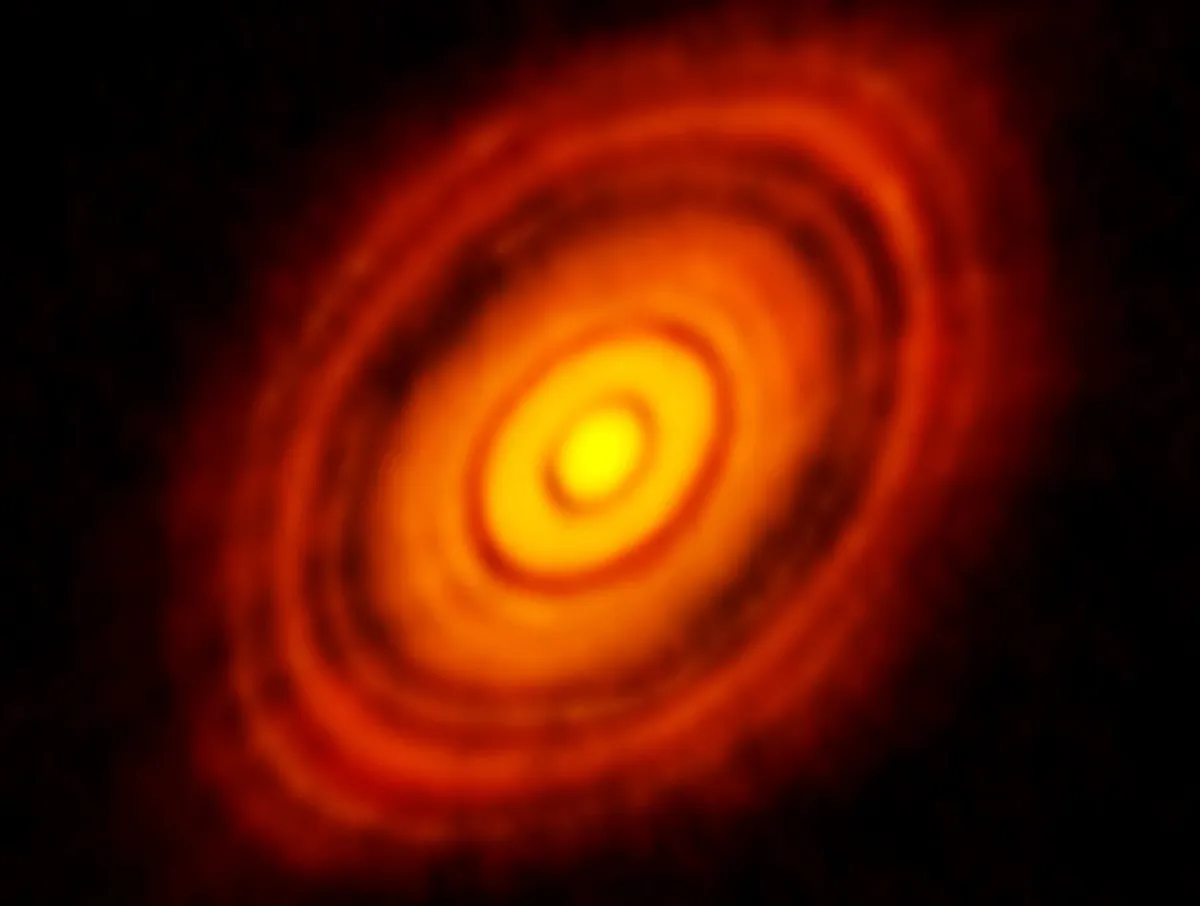The James Webb Telescope has observed the dusty disc around a young, low-mass star and found the richest hydrocarbon chemistry ever seen around a protoplanetary disc.
A protoplanetary disc is a ring of cosmic dust and gas that's left over following the formation of a star.
The remaining stellar ingredients stay in orbit around the star, forming a whirling, swirling disc.
This disc contains the ingredients out of which planets may eventually form.

Tiny grains of dust coalesce under gravity over time, eventually forming larger pebbles, growing and growing until they become fully formed planets in orbit around the star.star.
The same is true of our own Solar System: the planets, moons and asteroids developed from the protoplanetary disc that surrounded our young Sun just after it formed.
Webb has been studying one such disc around a young, low-mass star and the data suggests that discs around this type of star may evolve differently compared to more massive stars.
Studying the disc around ISO-ChaI 147
The team behind the study observed the region around a low-mass star just one tenth the mass of our Sun, known as ISO-ChaI 147.
The observations reveal insights into the planet-forming environment and the ingredients required for worlds to develop around the star.
The James Webb Space Telescope revealed the gas in the disc around the star is rich in carbon.
This may indicate that carbon is removed from the solid material from which rocky planets can form, and could explain why Earth is relatively carbon-poor.
The spectrum - analysis of the star's light - produced by Webb's Mid-InfraRed Instrument (MIRI) shows the richest hydrocarbon chemistry seen to date in a protoplanetary disc.

The team identified 13 carbon-bearing molecules up to benzene, including the first detection of ethane beyond our Solar System.
They also also successfully detected ethylene, propyne and the methyl radical CH3 for the first time in a protoplanetary disc.
"Webb has a better sensitivity and spectral resolution than previous infrared space telescopes," says lead author Aditya Arabhavi of the University of Groningen in the Netherlands.
"These observations are not possible from Earth, because the emissions are blocked by the atmosphere. Previously we could only identify acetylene (C2H2) emission from this object.
"However, Webb’s higher sensitivity and spectral resolution allowed us to detect weak emission from less abundant molecules. Webb also allowed us to understand that these hydrocarbon molecules are not just diverse but also abundant.
"These molecules have already been detected in our Solar System, for example in comets such as 67P/Churyumov–Gerasimenko and C/2014 Q2 (Lovejoy).
"It is amazing that we can now see the dance of these molecules in the planetary cradles. It is a very different planet-forming environment from what we usually think of."
Read the full paper at www.science.org/doi/10.1126/science.adi8147

